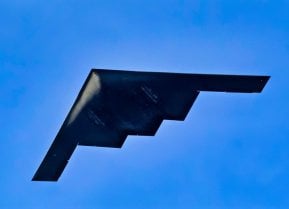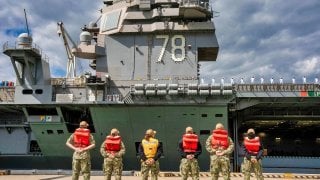Can U.S. Aircraft Carriers Survive in the Age of A2/AD?
The U.S. Navy faces increasing threats from anti-access/area-denial (A2/AD) systems developed by near-peer rivals like China.
Summary and Key Points: The U.S. Navy faces increasing threats from anti-access/area-denial (A2/AD) systems developed by near-peer rivals like China.
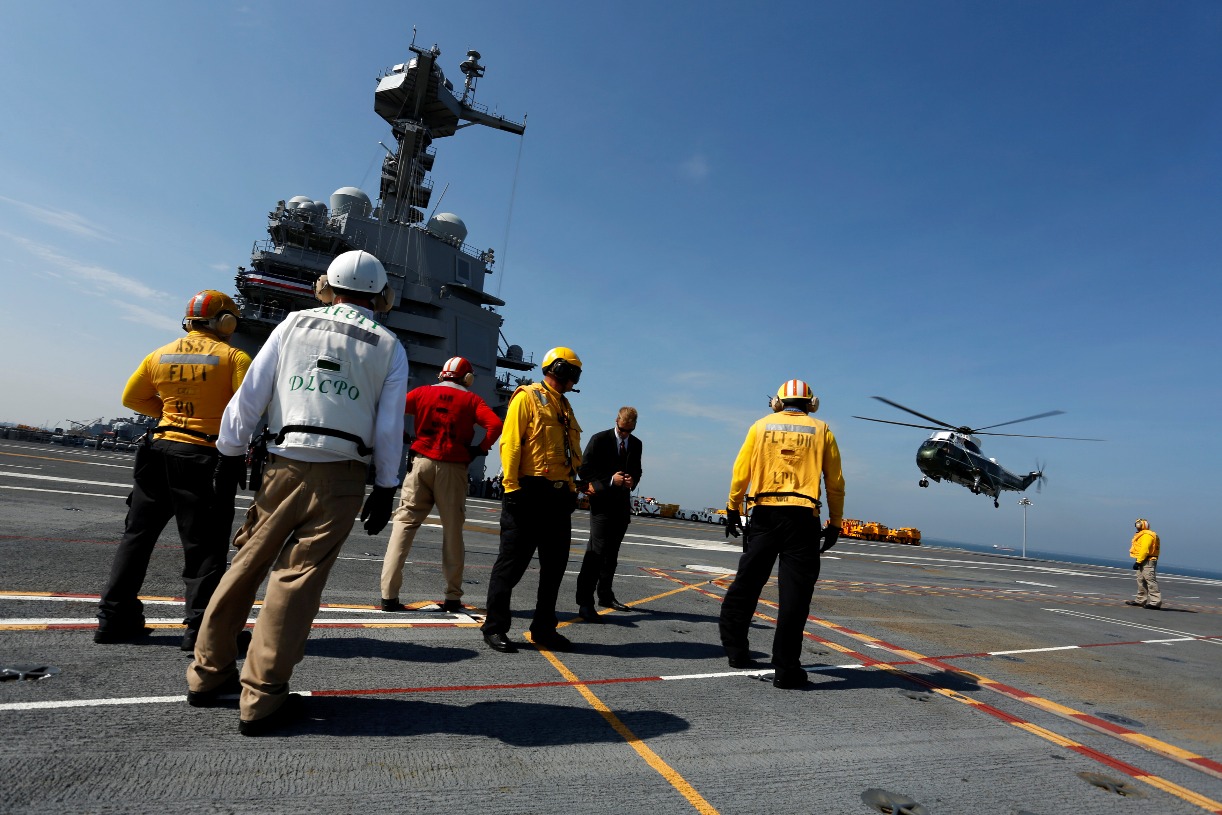
-These relatively inexpensive defensive systems threaten America's costly and complex offensive platforms, such as aircraft carriers.
-As smaller states and terrorist organizations like the Iranian-backed Houthis in Yemen acquire A2/AD capabilities, the Navy's ability to project power diminishes.
-Recent Houthi drone attacks on U.S. Navy warships demonstrate the growing sophistication and boldness of these groups.
-To maintain its strategic advantage, the Navy must prioritize the development of drone swarms, expand its submarine fleet, and invest in hypersonic weapons systems.
Defending Carriers: The Navy's Response to Emerging Threats
It has become trite to say that America’s “unipolar moment” has ended. Sadly, it has ended. Yet, the elites who run US foreign and national security policy have yet to realize this tragic reality. The longer that they continue operating as if it is 1994 as opposed to 2024, the more likely the US military will suffer its greatest defeat since the Battle of Bladensburg during the War of 1812. Understanding the grave threat that relatively inexpensive defensive systems, such as anti-access/area-denial (A2/AD), pose to America’s wildly expensive—and complicated—offensive weapons platforms, such as its aircraft carriers, is an important step for US policymakers.
The longer that US policymakers fail to consider the rise of these A2/AD systems, the more insecure America becomes.
As Steven Stashwick of The Diplomat wrote way back in 2016, “the United States is already paying much more for a proportionally smaller increase in combat performance, a diminishing future operational return on increasing military investments.” Citing both the Ford-class aircraft carrier and the F-35 Lightning II fifth-generation warplane as examples of the diminishing operational return on increasing military investments, Stashwick suggested that US war planners abandon the concept of decisively defeating a near-peer rival in combat. Instead, Stashwick believes the Americans should simply seek to deny their rivals from winning.
Interestingly, America’s greatest rivals—notably China—have so thoroughly perfected their A2/AD capabilities that even attempting to deploy expensive systems, such as the aircraft carriers, into areas that are home to these dangerous A2/AD systems would be wasteful.
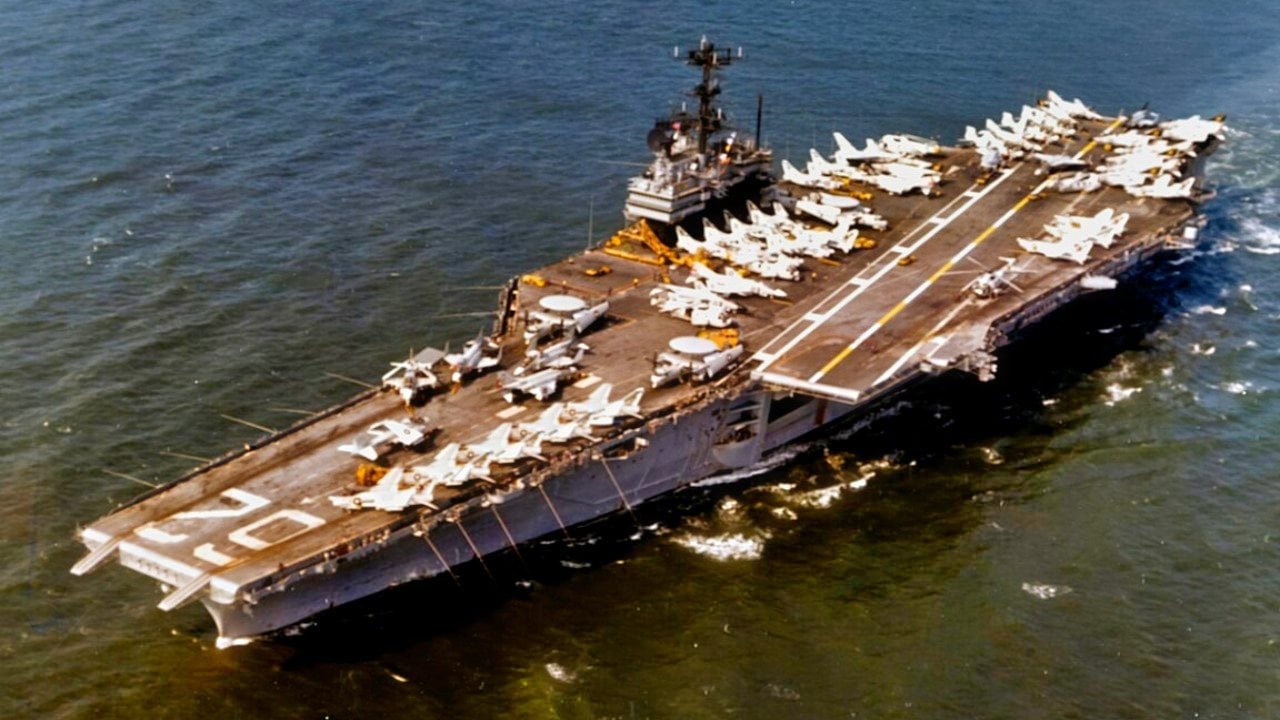
So, if the US cannot use its greatest naval power projector against near-peer rivals due to their A2/AD capabilities, when and where could these assets be used?
Fighting Smaller Enemies
Aircraft carriers would be useful, as they have been over the last 79 years since the end of the Second World War, in regions where the enemies of the United States lack these A2/AD capabilities. However, the problem is that both China and Russia are rapidly proliferating these systems to smaller states and transnational terror organizations because they understand that A2/AD stunts the ability of the US military to project power.
Take, for example, the situation currently plaguing global shipping around the Middle East. Iranian-backed Houthi rebels operating out of Yemen are increasingly threatening the safety of global shipping through regions, such as the Red Sea and the Strait of Bab El-Mandeb.
Despite having been terrorizing the high seas since last October, the US Navy, which has many assets in the region, has stayed its hand in responding to the Houthi threat directly. Because of its hesitancy to respond, the Houthis have only been more encouraged to continue antagonizing the situation, believing the US Navy will not directly respond to their endless provocations.
In fact, the Houthis have gotten so bold that they just recently launched a massive attack consisting of advanced offensive drones and directed them to attack nearby US Navy warships.
The Navy warships dispatched the Houthi drones (which were provided by the Iranians, the chief benefactor for the Houthis) with relative ease. But, as a colleague and expert in military affairs quipped to me shortly after that event, all these attacks against US Navy assets are merely data-gathering missions.
The Houthis are escalating at every engagement with the Navy. With each engagement, they learn invaluable intelligence about the Navy’s defensive capabilities.
Will Even the Houthis Threaten US Aircraft Carriers & Capital Ships?
It would not be too difficult for this tiny terrorist organization to suddenly be handed A2/AD capabilities by their Iranian, Chinese, or Russian allies. Such systems would only allow for the Houthis to operate with even more impunity than they’ve already been operating under. And the US Navy seems willing to oblige even these tinier threats by not innovating their own effective countermeasures to the growing global A2/AD threat.
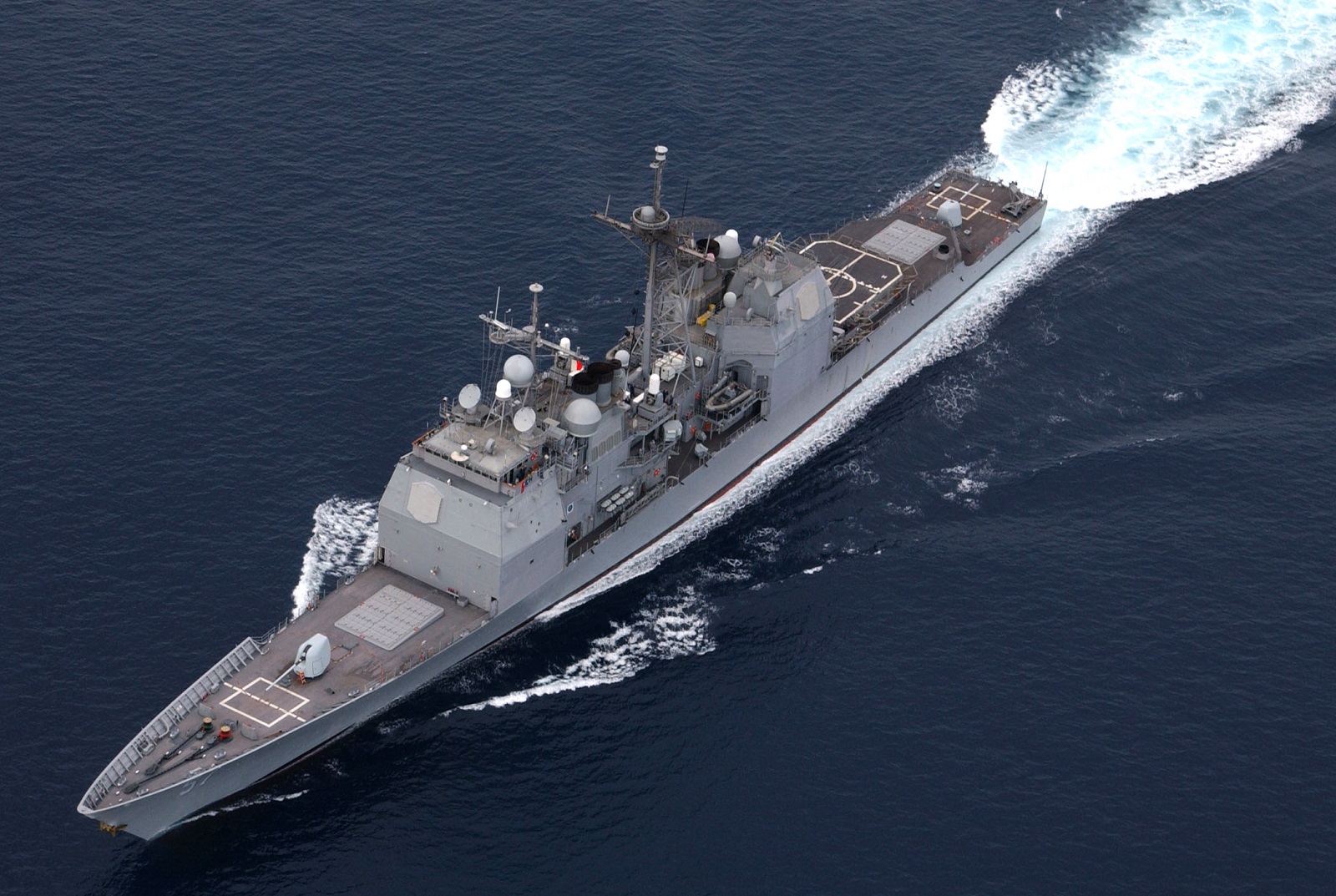
So, until they do, the world will become smaller and smaller for US forces. Specifically, there will be fewer areas in which US carriers and other capital ships could operate with the kind of impunity they’ve become accustomed to since the end of the Cold War.
Yes, given A2/AD capabilities being fielded by rivals, like China, US carriers will be increasingly relegated to operating in ancillary areas of interest. But China and its autocratic allies will not be content to simply keep US power projection out of their respective regions.
Instead, they’ll seek to rollback US power everywhere. Even groups like the Houthis will suddenly become important destinations for A2/AD capabilities.
The Navy needs to take the development of massive drone swarms, the expansion of its submarine fleet, and hypersonic weapons systems much more seriously than it has. Otherwise, even the Houthis will possess the means to sink US carriers—thereby ensuring that those systems could not be deployed to even places like Yemen.
About the Author:
Brandon J. Weichert, a National Interest national security analyst, is a former Congressional staffer and geopolitical analyst who is a contributor at The Washington Times, the Asia Times, and The-Pipeline.
All images are Creative Commons or Shutterstock.
Image Credit: U.S. Navy Flickr.
